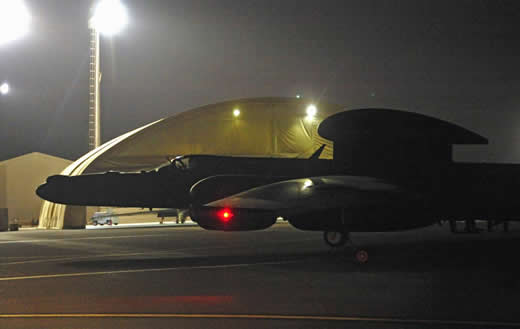
Goodrich Corp. is upgrading the two Senior Year Electro-Optical Reconnaissance Sensors (SYERS) currently used on U.S. Air Force Lockheed Martin U-2 ‘Dragon Lady’ platforms operated by the 9th Reconnaissance Wing. In addition to SYERS, the U-2 also carries a 30-inch Optical Bar Camera (OBC) and a 24-inch IRIS camera offering high resolution, panoramic imaging sensors and the Advanced Synthetic Aperture Radar System (ASARS-2) providing all-weather radar imaging capability.


Originally developed as a top-classified ‘black’ program SYERS but with the declassification of the U-2 program, this sensor was also declassified. The original SYERS used the DB-110 EO system (currently configured in tactical recce pods). The DB-110 platform provides the rotating nose section which aims the sensor’s line of sight at the required area of interest, enabling automatic scan using automatically scan methods, including continuous, push broom, or still-frame.
The original dual-band SYERS sensor flown on the U-2 ISR platform was manufactured by Goodrich ISR Systems. The SYERS sensor flown on the U-2 ISR platform was manufactured by Goodrich ISR Systems. The upgraded sensors, designated SYERS-2A, will enhance U-2 functionality by adding additional multi-spectral imaging capability to the platform, providing more utility in discerning imagery. Multi-spectral sensors capture images at specific frequencies across the electromagnetic spectrum enhancing the sensor’s capability to obtain high resolution imagery under adverse weather conditions of haze and light fog. Multi-spectral enhanced images provided by the payload are used for targeting, threat analysis, and situational assessment, by evaluating changes in images taken in different times, showing differences not readily apparent to the human eye.
The current SYERS-2 system collects imagery in seven wavelength bands simultaneously (green, red, near Infra-Red (IR – visible), two short-wave IR and a mid-wave IR band), all are transmitted to a ground exploitation system and viewed in real-time. Imagery analysts combine the separate spectral bands in different combinations in order to highlight the characteristics of different objects. This spectral collection capability enables a variety of enhanced imagery information outputs including false color composites, optical moving target indication, providing optical data supporting Measurement And Signature INTelligence (MASINT).



















